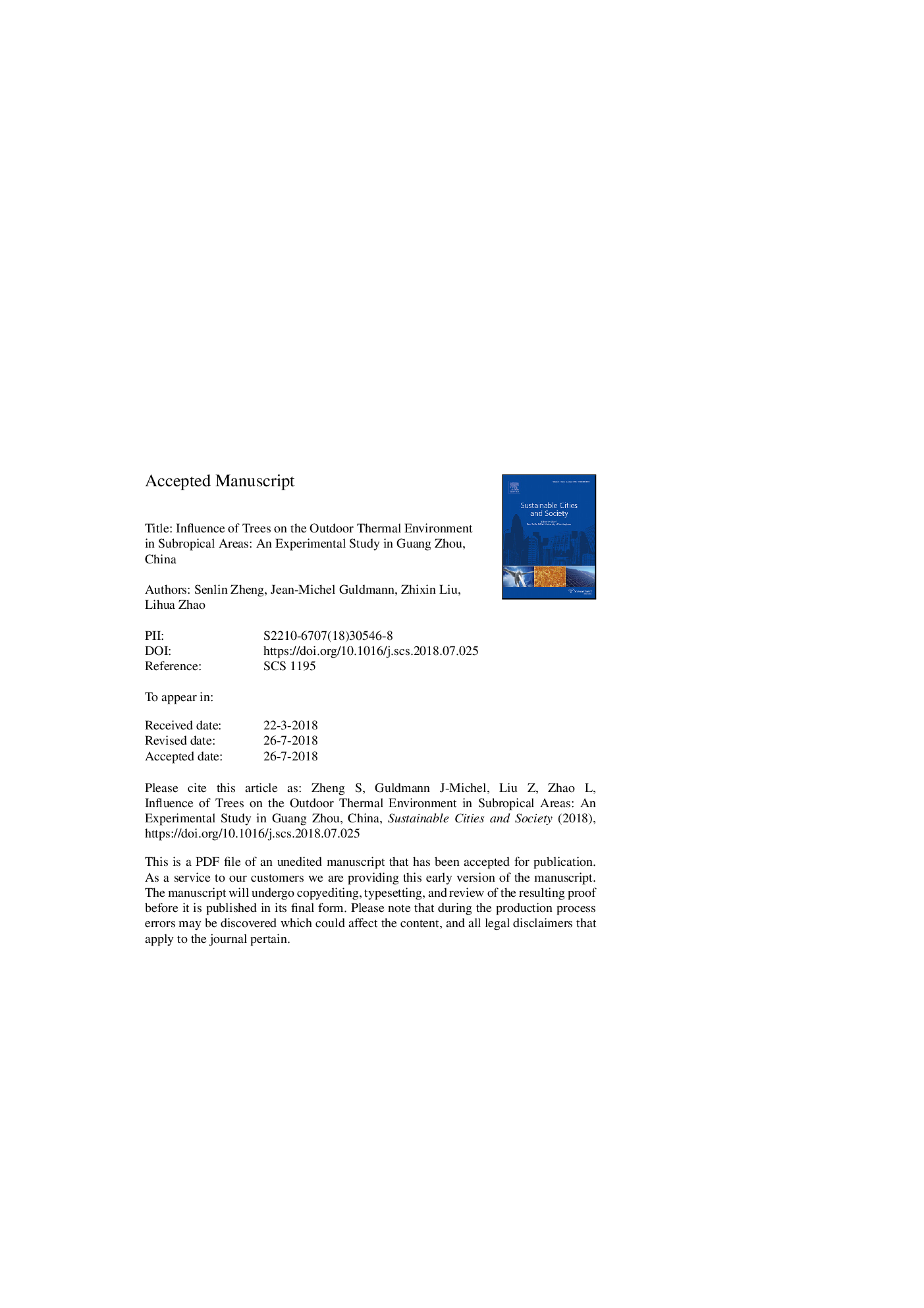| Article ID | Journal | Published Year | Pages | File Type |
|---|---|---|---|---|
| 11001294 | Sustainable Cities and Society | 2018 | 58 Pages |
Abstract
Tree morphology and characteristics are quite different among different tree species, leading to large differences in cooling performance across tree species, particularly across different climatic regions. To obtain microclimatic characteristics and data on the influence of common subtropical tree species on the outdoor thermal environment, this study investigates, with field measurements, three physiological indices (leaf transpiration rate, leaf surface temperature, and leaf reflectance) and seven microclimatic parameters (solar radiation, long wave radiation, mean radiant temperature (Tmrt), ground surface temperature, air temperature, relative humidity, and wind speed) characterizing four common tree species in Guangzhou: Ficus microcarpa, Mangifera indica, Michelia alba, and Bauhinia blakeana. The Physiological Equivalent Temperature (PET) is calculated with the Rayman 12 tool to assess human thermal comfort. Special focus is set on the differences between these parameters in the presence and absence of tree cover. The results are as follows: Ficus microcarpa has the best cooling performance (reduced solar radiation by 1050âW/m2, reduced Tmrt by 14.8â°C, reduced PET by 32.4â°C). These trees have also some negative effects: reducing wind speed (2.83âm/s) and increasing long wave radiation (55âW/m2). It is expected that these data and results will shed some light on tree planting implications in subtropical areas.
Related Topics
Physical Sciences and Engineering
Energy
Renewable Energy, Sustainability and the Environment
Authors
Senlin Zheng, Jean-Michel Guldmann, Zhixin Liu, Lihua Zhao,
